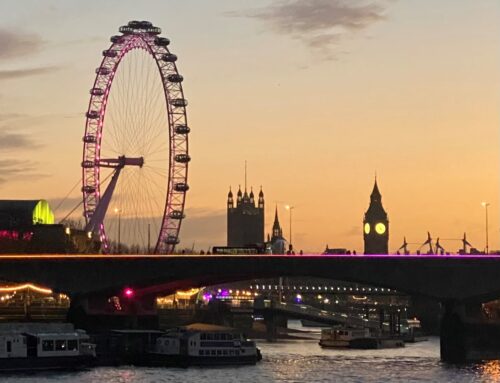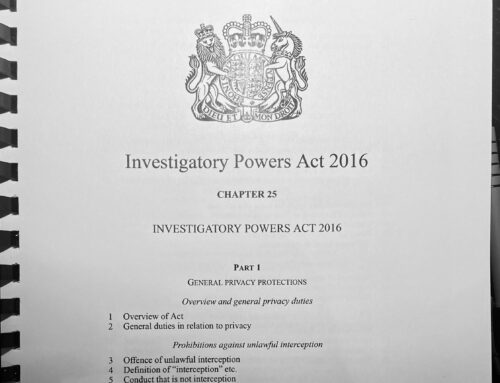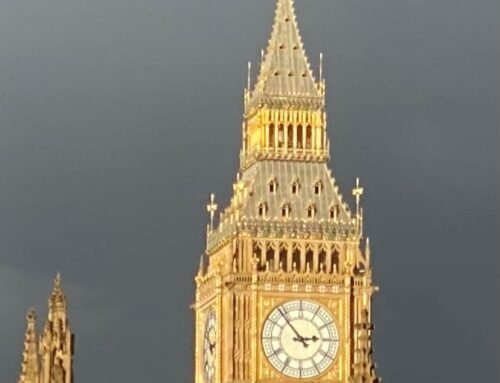We are advised to stay at home these days, probably for good reason. But as of this afternoon, that advice became a legally binding rule. The Health Protection (Coronavirus, Restrictions) (England) Regulations 2020 were issued and took effect at 1pm today. They will lapse if Parliament has not approved them by mid-May. But in the meantime, it is open to the courts to scrutinise them, if they are invited to do so.
Confined to my own house this evening, in the absence of a reasonable excuse for leaving it, it occurred to me to wonder whether that requirement (given effect by Regulation 6) is ultra vires its parent statute, the Public Health (Control of Disease) Act 1984. In other words, is it lawful?
Given the extraordinary impact of the “stay at home” requirement, that legal issue deserves to be carefully considered. This piece aims not to be authoritative, but to start the debate.
Regulation 6
Regulation 6(1) provides that during the emergency period (a period of up to six months, to be determined by the Secretary of State on the basis of three-weekly reviews), no person may leave the place where they are living without reasonable excuse. Regulation 6(2) lists a range of reasonable excuses, including the need to obtain basic necessities for those in the household, travel for work that cannot reasonably be done from home, the taking of exercise and the attending of funerals. Disobedience may be punished with a fixed penalty notice for £60, doubling with each successive offence to a maximum of £960. The provision taken as a whole is breathtaking, and perhaps unprecedented, in its reach.
It may well be that this restriction, extreme as it is, can be justified by the seriousness of the current pandemic. I do not seek to suggest that Regulation 6 is other than proportionate (as the parent Act also requires it to be). My question is a narrower, legal one: are restrictions of this nature within the scope of the powers conferred upon the Government by statute? Was Regulation 6 lawfully made?
Public Health (Control of Disease) Act 1984
The specified legal basis for the Regulations (so far as relevant) is sections 45C(1), 45(3)(c) and 45(4)(d) of the Public Health (Control of Disease) Act 1984.
Section 45C(1) authorises provision to be made for the purpose of protecting against the spread of infection. Regulation 6 plainly has this purpose.
Section 45(3)(c) states that Regulations under s45C(1) may in particular include provision “imposing or enabling the imposition of restrictions or requirements on or in relation to persons, things or premises in the event of, or in response to, a threat to public health”. Again, this requirement is satisfied by Regulation 6.
This does not mean, however, that any restriction or requirement can be imposed on persons in response to a public health threat. The position is fleshed out in section 45C(4), which provides as follows:
The restrictions or requirements mentioned in subsection (3)(c) include in particular—
(a) a requirement that a child is to be kept away from school,
(b) a prohibition or restriction relating to the holding of an event or gathering,
(c) a restriction or requirement relating to the handling, transport, burial or cremation of dead bodies or the handling, transport or disposal of human remains, and
(d) a special restriction or requirement.
The words “include in particular” suggest that this list is not exhaustive. But to be acceptable, any other type of restriction would need to be eiusdem generis (of the same nature). This is a doctrine restrictively applied, particularly where fundamental encroachments into our rights are concerned.
It is not as it happens necessary to consider the eiusdem generis principle in this context, because the Government relies specifically on section 45C(4)(d) as the basis for its Regulations. The key issue, therefore, is whether Regulation 6 is “a special restriction or requirement” within the meaning of section 45C(4)(d).
Section 45C(6) tells us that “a special restriction or requirement ” means a restriction or requirement which can be imposed by a justice of the peace by virtue of (in relation to persons) section 45G(2).
Section 45G is entitled “Power to order health measures in relation to persons”. It sets out the circumstances in which a justice of the peace (magistrate) may make an order in relation to a person (P) if the justice is satisfied that P is or may be infected or contaminated. Section 45G(2) contains an exhaustive list of the restrictions or requirements that may be imposed on P:
“(a) that P submit to medical examination;
(b) that P be removed to a hospital or other suitable establishment;
(c) that P be detained in a hospital or other suitable establishment;
(d) that P be kept in isolation or quarantine;
(e) that P be disinfected or decontaminated;
(f) that P wear protective clothing;
(g) that P provide information or answer questions about P’s health or other circumstances;
(h) that P’s health be monitored and the results reported;
(i) that P attend training or advice sessions on how to reduce the risk of infecting or contaminating others;
(j) that P be subject to restrictions on where P goes or with whom P has contact;
(k) that P abstain from working or trading.”
The only remotely close match for Regulation 6 is section 45G(2)(j): “restrictions on where P goes or with whom P has contact”. But it is doubtful, for two reasons, whether Regulation 6 falls within its scope.
The first difficulty is in scaling up to the population as a whole measures which, if imposed under section 45G, would have been directed only to specified individuals in respect of whom a judicial finding had been made that they are or may be contaminated. The Government would argue that this exercise is permitted by section 45C(6), which (they would say) incorporates the section 45G(2) restrictions by reference into the very different context of general regulations under section 45C. While they may prove correct in this, the different nature of the exercise dictates considerable caution in interpreting section 45G(2).
The second difficulty is in envisaging how Regulation 6 could be brought within the ambit of section 45G(2)(j). Section 45G(2)(j) envisages restrictions on where people go, and/or with whom they have contact. These are significant impediments, recalling the “exclusion measures” and “association measures” that may be imposed on dangerous terrorist suspects (with extensive safeguards) under paragraphs 3 and 8 of Schedule 1 to the Terrorism Prevention and Investigation Measures Act 2011. Such measures may, for example, ban a suspected terrorist from entering a specified area or place, or ban association and communication with specified persons or descriptions or persons.
Regulation 6 goes further even than this, banning everyone from leaving their home save for specified and limited purposes. For such a remarkable limitation of personal freedom to be contemplated by statute, one would have expected to find clear words in section 45G(2): something like “that P be required not to leave the place where P is living, save for specified purposes”.
The context of an epidemic is of course different from that of terrorism, where the risk of contact is likely to be associated with specific locations or individuals. The Government might be expected to argue, should a case come to court, that a highly infectious disease is liable to require movement restrictions of a blanket nature, and that since the Public Health (Control of Disease) Act 1984 was drafted with precisely such an eventuality in mind, section 45G(2)(j) should be given a broad interpretation.
In summary, the impact on personal liberty in Regulation 6 goes right up to the limit of what is permitted under its parent statute, and arguably beyond. An ultra vires challenge would attract strong arguments in both directions. Ultimately, however, a court which is minded to uphold it as valid has, as it seems to me, a plausible legal argument for doing so.
Coronavirus Act 2020
A final point to consider is whether, if Regulation 6 were declared unlawful, it could be re-made under section 52 and Schedule 22 to the Coronavirus Act 2020, which received Royal Assent last night. Once again, the issue is finely-balanced.
There is a power to impose prohibitions, requirements or restrictions on owners and occupiers in relation to (among other things) the departure from premises (Sch 22 para 6(1)). But directions under para 6(1) are limited by paras 6(5) and (6) as follows:
“(5) A direction under sub-paragraph (1) may, among other things, impose requirements for the purpose of—
(a) closing the premises;
(b) restricting entry into the premises;
(c) securing restrictions in relation to the location of persons in the premises.(6) A direction under sub-paragraph (1) may impose prohibitions, requirements or restrictions by reference to (among other things)—
(a) the number of persons in the premises;
(b) the size of the premises;
(c) the purpose for which a person is in the premises;
(d) the facilities in the premises;
(e) a period of time.”
“Among other things” indicates that these categories are not exhaustive. Nonetheless, it is questionable whether it would be eiusdem generis to place restrictions on the purpose for which a person may leave premises. That is the burden of Regulation 6, but it finds no echo in paragraphs 6(5) and (6) of the Schedule.
It is understandable, therefore, that the Government did not attempt to confine us to our homes by directions under the Coronavirus Act 2020. And while the chosen legal basis of the Public Health (Control of Disease) Act 1984 may be held to be sufficient for the remarkable restriction on liberty that is Regulation 6, that is not, perhaps, a foregone conclusion.






